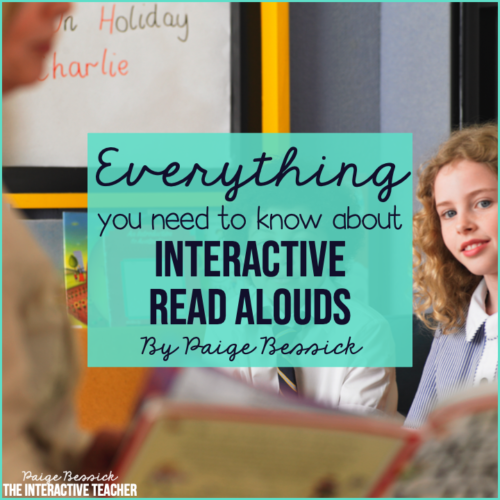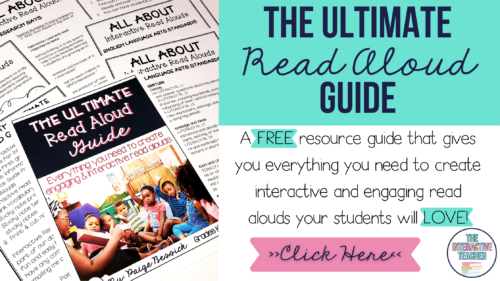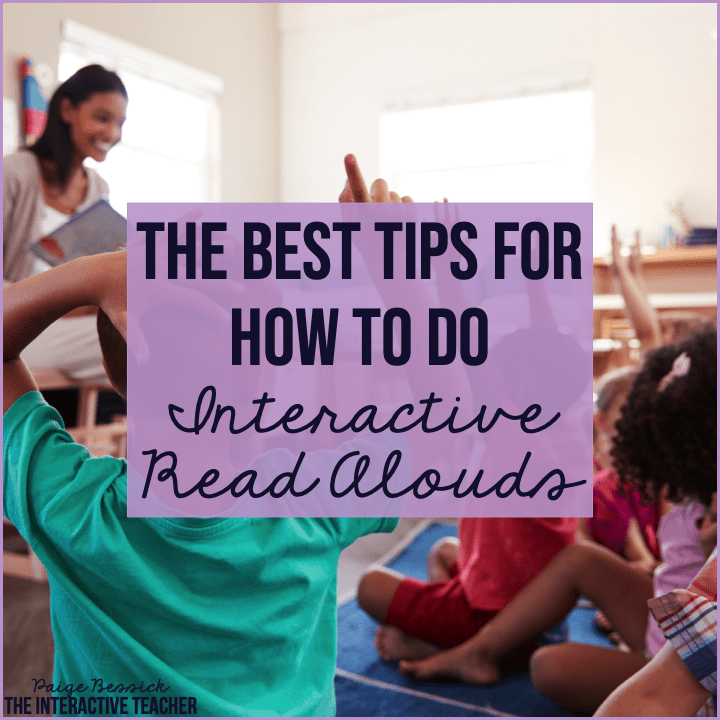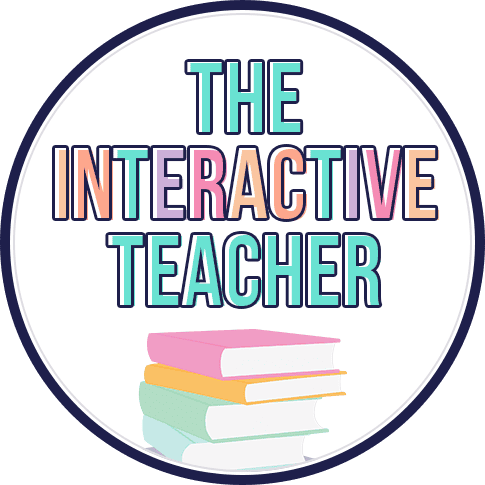Interactive Read Alouds are one of my favorite things to do in the classroom, as you may know. ???? I love doing them with my class, but they can be a pain to prepare for. Read on for 5 easy steps for how to plan an Interactive Read Aloud.
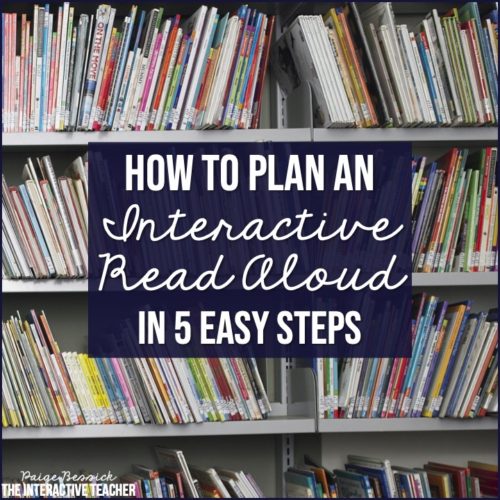
1. Pick a Book
- The listening level of your students. The book does not have to be at their reading level, but it DOES have to be at their listening level. Some picture books will be too easy for them and some will be too hard.
- The vocabulary level of your students. Just as you wouldn’t want to read a book way over your students listening level, it’s important to keep their vocabulary level in mind. If you have ELL students you will want to pay particular attention to the vocabulary. If they don’t understand the words of the book, you cannot expect them to practice focus skills because they will be too busy trying to comprehend.
- Is the book good literature? We all know those books that are not very high-quality. We always want to share books that set a great example for literature.
- Is the book fun and entertaining? If you are excited to share a book with your students, they will be excited to listen and participate. If you are not, then they will not be either. They react to books how you react to books.
2. Read the book several times
3. Determine a couple of focus skills
When I plan an interactive read aloud, the first one will typically focus on predicting, connecting and vocabulary. The second reading I will often have a more common core focus where the students practice describing the story elements and retelling. Those skills are easier to practice after they have heard the story a couple of times.
4. Choose Vocabulary Words
-
-
Think about common, important, and functional words
-
Explain the meaning with kid-friendly definitions and pictures.
-
Interact with the words (write/dictate sentences, draw picture, fill in the blank, compare, etc.)
-
Model and use repetition to practice words
-
If you have a high number of ELL students in your classroom, like I do, I typically pre-teach the vocabulary words before we start reading. That way when we come to them, they will already have an idea of what the words mean and will better be able to understand them and add them to their own vocabulary.
5. Plan Before, During & After Reading Activities
-
- Identify title, author, illustrator, and purpose for reading
- Sneak peak at book
- Activate background knowledge and schema
- Make predictions.
Some activities you can do DURING your reading are:
-
- Question and response
-
- Discussion and sharing
- Make connections
- Emphasize vocabulary
- Respond to text & make it interactive!
-
- Retell
- Share thoughts
- Discuss the lesson learned
- Check predictions
Next, if you’re doing two readings, do your sticky notes in 2 different colors to keep track of what to do during each reading.
I have created an interactive read aloud planner for you to use to help you prepare. I will use this planner before I do my sticky notes that way I have my thoughts and ideas all in one place before writing out my sticky notes.
Now, if you’re really looking for easy IRA planning, I have done it for you for some of my favorite books. Click on the image below to see the resources I have made where I have planned 2 complete interactive read alouds for you.
More about interactive read alouds
Check out these other blog posts all about interactive read alouds
- 3 reasons why you need to be doing interactive read alouds
- The best tips for interactive read alouds
- How to do interactive read alouds
- 3 ways to prepare for an interactive read aloud
- How to print on sticky notes
Or check out >>THIS<< blog post!
Please pin and share so others can see these tips.
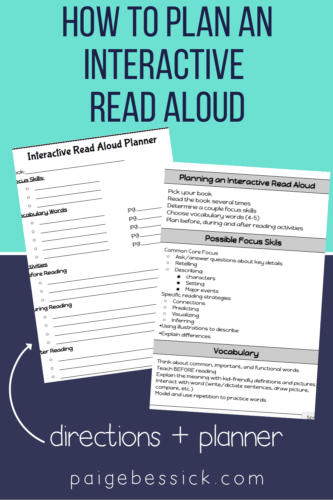
There it is! How to plan an interactive read aloud. As always, I hope I’ve made it easy for you to implement interactive read alouds in your classroom. Please comment below or email me at [email protected] if you have anything to share!










